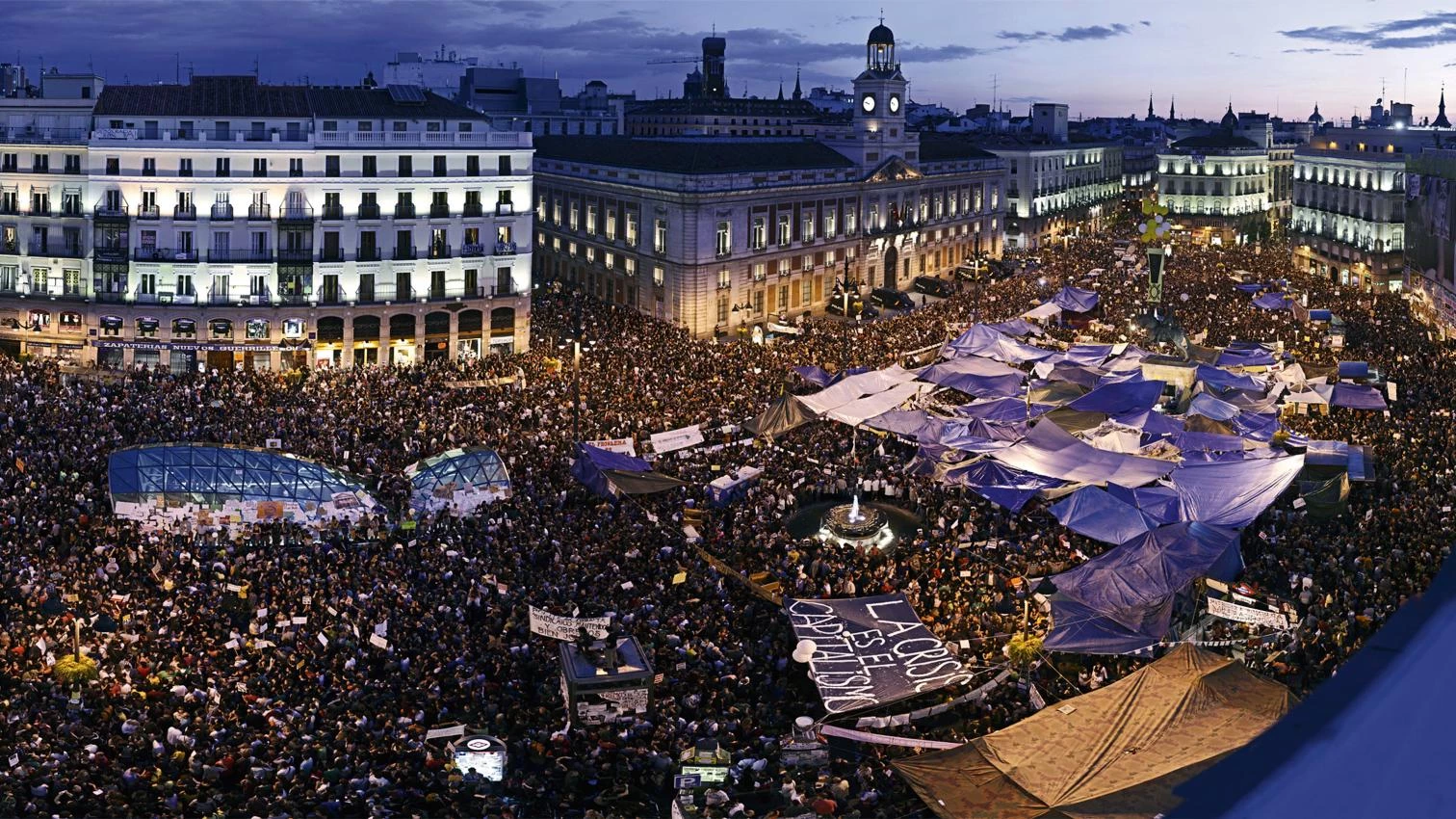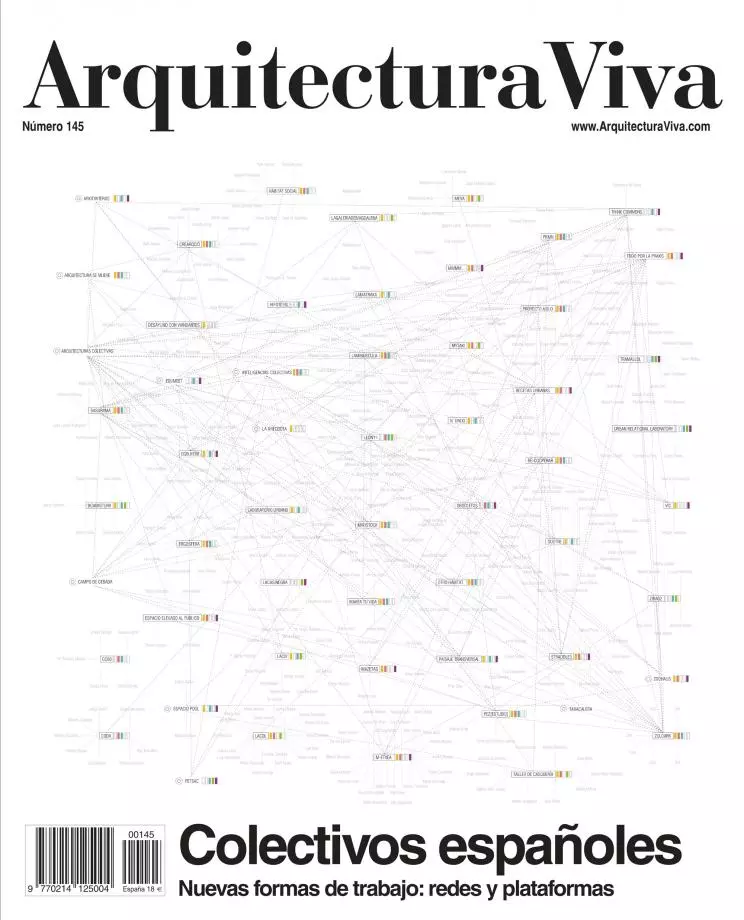
June 12 marked one year since the dismantling of that camp that Twitter baptized as #Acampadasol. However, the place is far from being forgotten. At the time, Manuel Borja-Villel chose it in Art Forum as the most important work of art of 2011. Months later, the European Prize for Urban Public Space created a special category to highlight its virtues. For her part, Esperanza Aguirre decides to award the Prize for Tolerance to the victims of the terrorist group ETA and to the merchants of Sol, the latter recognized for "their tolerance and temperance" in the face of the "illegal occupation" of the square. Beyond ideological positioning, how can the motives of each be read from the architectural point of view?
The awards from art and urbanism point to a surprising fact: this time, the political claim is expressed through a settlement. Calling for another society, the 'indignados' begin by building a small city within a city, which some call the Ciudad de Sol. Despite its chaotic appearance, there is in this motley space a whole series of driving lines of enormous coherence that configure a sort of 'architectural manifesto' that we will briefly try to enunciate here.
One of its axes has to do with precarious construction, which brings to the center of the city procedures typical of the bidonville. The Acampada builds with materials that Madrid discards: cardboard, pallets, tarpaulins, ropes, pieces of wood and a wide variety of objects are used. Some things have been collected and others have been donated. The attitude of rejection towards the consumer society has its correlate in a precarious aesthetics of material poverty, pointing to the ways of life of the excluded.
These elements collected from the street are put at the service of self-construction. Inciding on the DIY principle, the one who imagines a structure has to make it. Thus, the square is filled with huts that provide a physical space for the various commissions and working groups. The proposal of a policy by and for all is matched by that of an architecture by and for all. This non-specialization is reminiscent of the Situationist proposal and brings to mind the famous phrase of Joseph Beuys, who said that "every human being is an artist". Ciudad de Sol is an example of popular urbanism, of amateur building at ground level.
Unregulated self-construction generates organic growth. And yet there is an organizational component that shapes the whole: from the outset there are clear zonal separations according to activity, differentiating spaces for rest and sleep, discussion areas or work environments. Drawn with adhesive tape on the floor, corridors and safety zones are traced immaterially: the west side of Puerta del Sol always remains empty so that, in hypothetical emergency situations, ambulances can access. Various maps made throughout the month clearly reflect the levels of self-organization: there are several food stalls, an infirmary, a nursery, a library and a small vegetable garden next to one of the fountains. The perpetual mutation of these urban schemes means that the cartographies are in permanent process, and expire almost instantly. Both the maps and the physical settlement itself are prolonged in the network, through the social architectures of the Internet.
In the Acampada, civil disobedience takes a turn of the screw, by creating its own place of disobedient edification. The City of Sol is an illegal settlement, which squats with k the public space and refuses to abide by the designs of an authority that, at a time prior to the elections, renounces to repress it. When in June 2012 Esperanza Aguirre decides to reward traders who oppose the encampment, she reveals a particular concern for the invasion of corporate space, which is understood as the engine of the city. In reality, Aguirre is recognizing the relevance of the Acampada. He also seems to be aware of its deeper meaning: the activist camp is the staging of a different model of the city, which tries to compete with his idea of a mercantile metropolis, where the 'hard squares' are zones of passage that are crossed during the haphazard paths of consumption. In fact, one of the clearest demands present in the practice of the squatting movement has to do with the recovery of public space beyond the usual situations of purchased leisure. In a place of passage, without benches or shadows, the Ciudad de Sol proposes other constructive and social forms.
And yet, the Acampada was born with an ephemeral approach. When, after long discussions, it was decided to dismantle the settlement, decentralization was sought: at that time neighborhood assemblies had already been established and the method of protest through the camp had spread throughout the world. Dissolution wants to be omniscience; 'we are everywhere' it was said from the anti-globalization movement, one of the great precedents of this activist wave.
One year later, the anniversary of the occupied squares is being celebrated. From the Berlin Biennale to the Documenta in Kassel, various artistic events reflect plastically on the complex dimensions of what happened. In reality, many people never went home after May. Or not at all: the spring of revolt has been followed by months of constant citizen protest. Deleuze said that those who affirm the failure of the revolution "do no more than confuse two different things: the historical becoming and the revolutionary transformation of the people". In Madrid, a huge number of people see themselves transformed in the Acampadasol, and it is this change that continues to make them take to the streets.
The City of Sol demonstrates the great potential of an urban enclave. The architectural lesson could be in the realization that, sometimes, generating a dissident space catalyzes protest. We are talking about how the configuration of the urban has an enormous political force, which between May 15 and June 12, 2011 is used collectively. The one in Madrid is the first of many encampments that have made the precarious settlement a dissident weapon. In Vers une Architecture Le Corbusier reflected on the utopian impulse and its relation to building: "Society violently desires something that it will or will not obtain. Everything lies in that, everything depends on the effort made and the attention given to these alarming symptoms. Architecture or Revolution. Revolution can be avoided." The occupations movement seems to want to resolve this opposition by posing (popular) architecture as a tool of revolt.






